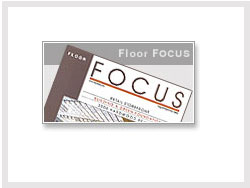Jay Flynn from Creating Your Space: Digital Evolution
By Jay Flynn
All flooring retailers’ top priority for their business is more leads. Their other priorities, like improved margins, higher close rates and reduced customer service costs, are much less important if they don’t have leads to turn into sales. Once a flooring dealer understands how online marketing works to develop and funnel leads into their store, developing and implementing an online marketing strategy to complement current traditional marketing becomes more straightforward.
Many dealers are reluctant to embrace these online technologies. So many tools, each with their own acronym—SEO, PPC, SEM, CPC, etc.—can create the impression that you need to know computer science just to get started. But the truth is that many of the tools and resources available in online marketing are much less complicated when described in plain English.
TOP PRIORITIES
The top priority is a quality store website. Virtually all online marketing consumer leads enter the store after they visit the store’s website. And data shows that approximately 90% of leads generated from traditional advertising go to the store’s website prior to visiting the store.
To drive those leads to a retailer’s website, and then to the store itself, the website needs to be dynamic and engaging. It should represent the store professionally, with consistent brand marketing. And it needs to showcase products available in the store and offer visualization tools to see the products in room settings.
The second priority is search engine optimization and reputation management. One makes a business much easier to find online, and the other ensures that when the business is found online, consumers will have a positive perception of it. Every business, big or small, needs to ensure it is aware of and engaged in both.
Search engine optimization is the process of improving website rankings in search engines in the “organic” area (non-paid) of search engine results. Some website development companies provide this service, but many do not, as optimizing search engine results requires a different set of skills and expertise.
Reputation management is a tool for recognizing and managing one’s online reputation, or what consumers say about one’s business using different online tools like blogs, Facebook, Twitter, Yelp, and Google Places.
Once those first two priorities have been handled, it’s time to determine the next move in online marketing with a budget, goals (like generating leads and brand development), and a strategy for integrating online marketing with an overall marketing plan.
ONLINE MARKETING: THE PROCESS
Online marketing options can be puzzling, and it’s important to utilize them in a specific order, with one building on the top of the next.
Pay-per-click is the most immediate and typically most effective lead generation tool, but also the most expensive. Google Adwords is the primary tool used in pay-per-click based on Google’s two-thirds marketshare of online search. The dealer bids for each keyword and pays the bid price every time a consumer clicks the dealer’s link in the ad space of the search engine results.
Once a dealer has used pay-per-click to generate leads, then it’s time to get listed in online directories. Directories are the second search method utilized by those looking for targeted results based on category. Yellow Pages, Citysearch, Yelp, WhitePages, Angie’s List and EZlocal are examples of the hundreds of directories. Free and paid options are available for most directories.
Next in the process is placing some banner ads in online newspapers. Online newspapers are generally local newspapers attempting to participate in online marketing as their customer base shifts to more online readers. Typically, the online ad offer is bundled with a traditional ad in a newspaper, but not always.
Once a dealer has some banner ads in place, retargeting is a good option to capture consumers who are still mulling over the dealer’s products. Retargeting is marketing online to consumers after they leave one’s website. The banner ad is placed on other websites the consumer visits. Retargeting is also prevalent on Facebook. Multiple variations of retargeting are available, based on how the process works and who is selling.
Email marketing puts the leads from pay-per-click to good use, and can incorporate the use of banner ads and retargeting. It’s a good leveraging tool once a retailer has developed a solid customer base and lead emails. The primary goal in email marketing is new business from the leads, then repeat and referral business from former customers. Retailers also have the ability to purchase email lists for specific demographics.
Social media can be incorporated at any point in an online marketing strategy, but having some awareness beforehand of the audience being reached—with data and statistics available from pay-per-click, directories, banner ads, retargeting and email efforts—will help to use it more effectively. Social media should be a tool to educate and build relationships, not to promote; it’s a long-term brand development strategy, not designed for short-term immediate sales results. Social media is also where retailers can reach the growing group of millennial customers.
Retailers entering into the world of online marketing would do well to stick to a fundamental game plan:
1. Define a strategy, taking into account budget, goals and overall marketing plan.
2. Identify a partner or partners to help implement and maintain objectives.
3. Measure results!
4. Refine the strategy and repeat.
One of the many advantages of online marketing is the ability to tie metrics to almost everything a retailer does. Retailers must ensure that they are using the right metrics and working with companies that provide data that correlates to more leads and more business, and then online marketing strategies can become an integral part of an overall marketing plan.
Copyright 2014 Floor Focus
Related Topics:Creating Your Space, Lumber Liquidators, The International Surface Event (TISE)
